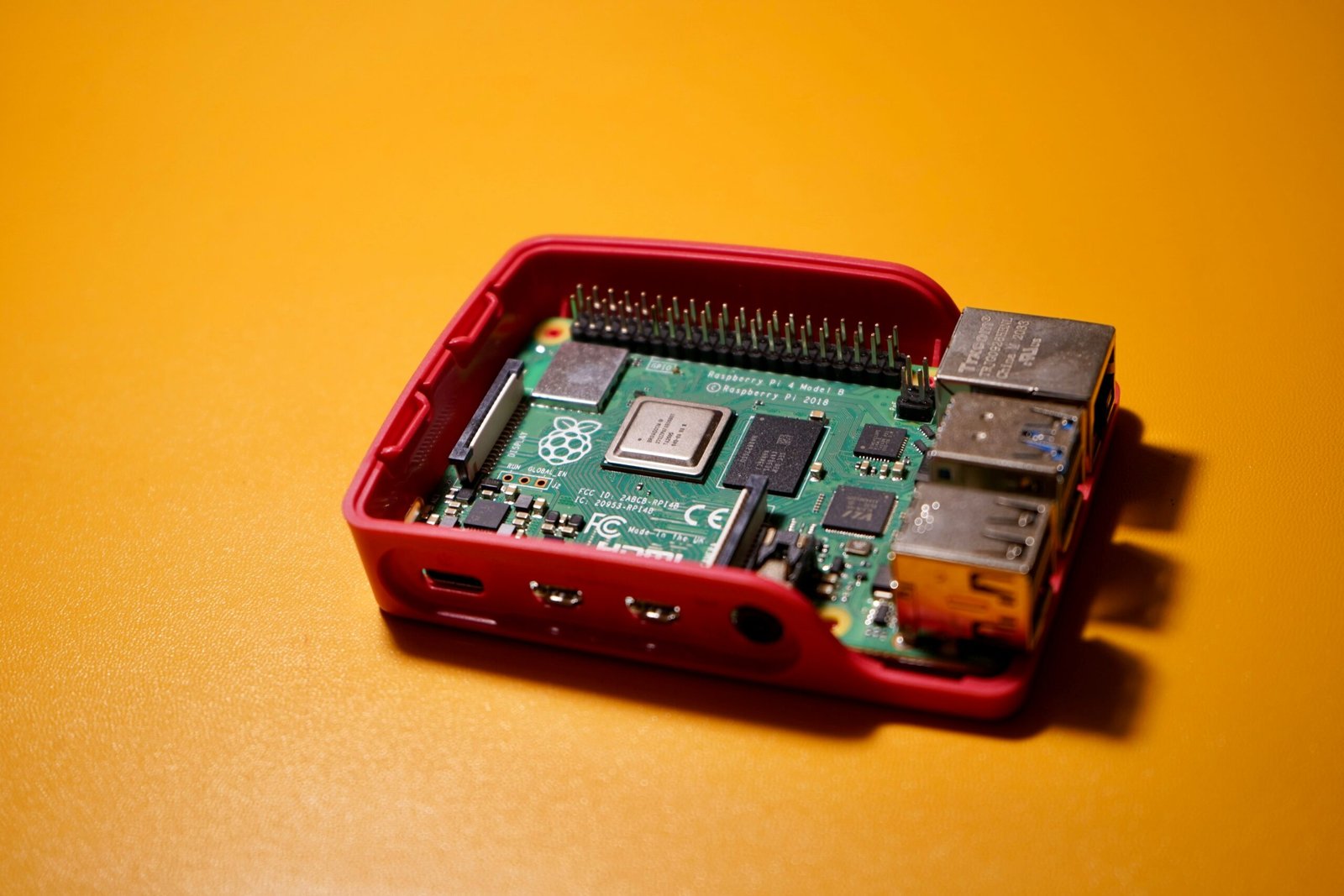The Future of Mobile Repairing: Trends and Innovations
Introduction: The Evolving Landscape of Mobile Repairs
The mobile phone has become an integral part of modern life, transcending its primary function of communication to become a versatile tool employed in various aspects of daily activities. As reliance on these devices has surged, so too has the demand for mobile repair services. The present landscape of mobile repairs reflects a dynamic interplay between escalating device usage and substantial technological advancements, shaping both the repair techniques and business models in the industry.
In recent years, the proliferation of smartphones equipped with advanced features such as high-resolution cameras, biometric security, and augmented reality capabilities has necessitated specialized repair skills. This technological progress introduces a layer of complexity in addressing issues as diverse as hardware malfunctions, software problems, and screen damages. Consequently, mobile repair professionals must continuously update their competencies to keep pace with these innovations, underscoring the evolving nature of the industry.
The growing demand for efficient and reliable mobile repair services has also catalyzed the emergence of new business models. Companies are increasingly adopting strategies such as on-site repairs, mail-in services, and logistics-based repair centers to cater to customers’ convenience. Furthermore, the application of digital solutions such as online booking systems and remote diagnostics has streamlined operations, enhancing customer satisfaction through swift and transparent service delivery.
Overall, the current state of mobile repairing underscores a significant shift towards more sophisticated and customer-centric approaches. As technology continues to evolve, it perpetually redefines the landscape, prompting continuous adaptation in repair practices and service frameworks. This dynamic environment not only challenges existing paradigms but also presents opportunities for growth and innovation within the mobile repair industry.
Technological Advancements in Mobile Devices
The landscape of mobile technology is continuously evolving, with innovations rapidly transforming the capabilities and functionalities of smartphones. One of the most notable advancements in recent years is the advent of foldable screens. These cutting-edge devices offer the flexibility of a larger display when unfolded, combined with the convenience of traditional smartphone portability. However, foldable screens introduce complex mechanical structures and new types of materials that demand specialized repair knowledge and highly specific tools. Technicians must now be adept in handling flexible OLED displays and ensuring the integrity of the folding mechanisms.
Another significant leap forward is the widespread adoption of 5G connectivity. This next-generation network standard promises lightning-fast internet speeds, low latency, and the ability to support a vast number of connected devices simultaneously. While 5G enhances user experience, it also complicates the repair landscape. The intricate design and sophisticated components required for 5G performance necessitate advanced diagnostic tools and precise repair techniques. Technicians must stay abreast of evolving network technologies to effectively troubleshoot and repair 5G-compatible devices.
Advancements in mobile camera systems also present new challenges for repair services. Modern smartphones now feature multiple lenses, cutting-edge sensors, and advanced computational photography capabilities. These enhancements significantly improve photo and video quality but also add layers of complexity to mobile repairs. Repair professionals must possess a comprehensive understanding of the intricate circuitry and delicate assembly of these camera modules. Additionally, precise calibration tools are required to maintain the high-performance standards expected from advanced camera systems.
As mobile technology continues to innovate, the realm of mobile repair must adapt accordingly. The increasing complexity of devices such as foldable screens, 5G connectivity, and advanced camera systems underscores the need for ongoing education and specialized skill sets among repair technicians. Mastery in the use of state-of-the-art tools and familiarity with novel materials are essential to meet the demands of the evolving mobile device market. The future of mobile repairing unequivocally lies in aligning repair practices with the pace of technological advancements.
Rise of Eco-Friendly Repair Solutions
In recent years, the mobile repair industry has witnessed a significant shift towards eco-friendly repair solutions. This trend is largely fueled by an increasing consumer awareness about the environmental impact of electronic waste and the unsustainable practices that have historically dominated the market. As customers become more educated on these issues, the demand for green repair solutions has surged, prompting businesses to innovate and adapt.
One of the primary eco-friendly repair practices gaining traction is the use of recyclable materials. Companies are now sourcing and utilizing parts made from recycled or biodegradable materials. By doing so, they not only reduce the carbon footprint but also contribute to a circular economy where resources are repurposed rather than discarded. This initiative is particularly crucial given the growing pile of electronic waste globally, which poses significant environmental hazards.
Furthermore, sustainable repair methods are at the forefront of this green movement. Instead of defaulting to replacements, repair shops are now focusing on refurbishing existing components to extend their lifespan. Techniques such as reballing, microsoldering, and replacing only the faulty parts rather than entire assemblies are becoming standard practices. These methods minimize waste and lower the demand for new raw materials, further reducing the overall environmental impact.
Another aspect driving the adoption of eco-friendly repair solutions is the introduction of products designed with repairability in mind. Some manufacturers are responding to market pressures by designing devices that are easier to disassemble and repair. Easy-to-replace batteries, modular components, and repair-friendly toolkits are now part of the product lifecycle, making it simpler for technicians to carry out repairs effectively and sustainably.
As the awareness of environmental issues continues to grow, it is expected that the mobile repair industry will increasingly prioritize and refine eco-friendly practices. Consumers, now equipped with the knowledge of their choices, are likely to favor businesses that embody and promote sustainability. Consequently, the trend of eco-friendly repair solutions is not only here to stay but is also set to become a standard industry practice in the foreseeable future.
Role of Artificial Intelligence and Automation
The advent of artificial intelligence (AI) and automation is revolutionizing the mobile repairing industry, promising unprecedented levels of efficiency and precision. AI-driven diagnostic tools have become a game-changer, enabling swift and accurate identification of device issues. These tools utilize vast databases of known problems and solutions to rapidly diagnose malfunctions, reducing the time traditionally required for manual troubleshooting.
Automated repair processes, facilitated by advanced algorithms, are another significant innovation. These systems can perform intricate tasks such as soldering miniature components or recalibrating sensors with remarkable accuracy. The use of robotics in mobile repair is gradually increasing, especially for repetitive or high-precision tasks. Robots equipped with machine learning capabilities can adapt to new challenges, continuously improving their effectiveness.
The benefits brought about by AI and automation in mobile repairing are manifold. Increased efficiency translates to quicker turnaround times, enabling repair shops to handle more devices and improve customer satisfaction. Precision is also markedly enhanced, as automated systems minimize human error, ensuring repairs are not only faster but also of higher quality.
However, the integration of AI and automation into mobile repairs is not without its challenges. One significant concern is the initial cost of implementing these advanced technologies, which can be prohibitive for smaller businesses. Additionally, the reliance on AI and robotic systems raises concerns about job displacement for skilled technicians. There are also potential complications related to the programming and maintenance of these advanced systems, which require specialized knowledge.
Despite these challenges, the role of AI and automation in mobile repairing is poised to expand. As technology advances and becomes more accessible, the industry will likely continue to evolve, setting new standards for quality and efficiency in mobile device maintenance. This ongoing transformation holds promise for a future where mobile repair services are not only faster and more precise but also more widely available.
Importance of Skill Development and Training
As the mobile repair industry continues to evolve rapidly, the necessity for ongoing education and training for mobile repair technicians cannot be overstated. The rapid pace of technological advancements means that repair professionals must keep themselves updated with the latest techniques and technologies to stay relevant and effective in their roles. This ongoing skill development is crucial not only for ensuring high-quality repair services but also for fostering innovation within the industry.
Emerging certification programs have become a cornerstone in maintaining a high standard of professionalism and expertise. These programs provide a structured pathway for technicians to validate their skills and knowledge, ensuring they are equipped to handle the complexities of modern mobile devices. Certifications from recognized bodies serve as a mark of credibility, offering clients peace of mind while also enhancing the career prospects of the technicians.
Workshops and hands-on training sessions are essential components of skill development in the mobile repair sector. These in-person events offer technicians the opportunity to gain practical experience with the latest tools and repair methodologies. Additionally, workshops often facilitate networking among professionals, fostering a community of practice that can lead to collaborative problem-solving and innovation.
Online courses have also revolutionized the way mobile repair technicians upskill themselves. The flexibility and accessibility of online learning platforms mean that professionals can update their knowledge and skills at their own pace, without the constraints of traditional classroom settings. These digital resources cover a wide range of topics, from basic device troubleshooting to advanced software and hardware repairs, ensuring that there is something for everyone, regardless of their expertise level.
Overall, the importance of skill development and training in the mobile repair industry cannot be underestimated. As mobile devices become more sophisticated, the demand for highly skilled technicians will continue to grow. By investing in continuous education and embracing emerging learning opportunities, mobile repair professionals can ensure they remain at the forefront of an ever-evolving industry.
The Impact of Right-to-Repair Legislation
With the evolution of right-to-repair laws across various regions, the mobile repair industry is witnessing significant transformations. These legislative changes are designed to empower consumers by granting them greater control over the repair and maintenance of their mobile devices. Consequently, these laws are paving the way for an increase in the availability of repair parts and manuals, previously restricted to authorized service centers.
One of the most notable impacts of right-to-repair legislation is on consumer autonomy. Users are now gaining unprecedented access to repair tools, diagnostic information, and original spare parts. This shift enables them to either perform repairs themselves or seek out third-party repair services without voiding warranties or compromising the functionality of their devices. The availability of such resources not only benefits the technically inclined but also encourages a culture of sustainability by reducing electronic waste.
From a business perspective, right-to-repair laws are fostering a more competitive market. Independent repair shops, which previously struggled to source genuine parts or access technical manuals, are now better equipped to compete with manufacturer-authorized service centers. This increased competition is driving down the costs of repairs, making them more affordable for consumers. Furthermore, the entrance of new service providers into the market stimulates innovation and diversification of repair solutions.
The legislative movement towards right-to-repair is also compelling manufacturers to rethink their approach to product design. With consumers and independent repairers gaining more access to repair infrastructure, manufacturers are under greater pressure to design mobile devices that are easier to repair, recycle, and upgrade. This not only extends the lifecycle of the devices but also aligns with broader environmental sustainability goals.
Overall, the right-to-repair legislation is heralding a new era in the mobile repair industry. By democratizing access to repair resources, these laws are significantly benefiting consumers, promoting competitive repair markets, and encouraging more sustainable business practices within the industry.
Innovations in Repair Tools and Equipment
The mobile repairing industry has witnessed significant strides in recent years, primarily driven by innovations in repair tools and equipment. A standout advancement in this sector is the development of precision instruments. These tools, designed to operate with pinpoint accuracy, enable technicians to handle intricate components of modern smartphones with ease. Precision screwdrivers, tweezers, and specialized opening tools rank among the most utilized instruments, allowing for detailed and accurate repairs of micro-sized parts.
Another noteworthy innovation is the emergence of modular tools. Unlike traditional repair kits that may offer limited flexibility, modular tools are adaptable and customizable, catering to a wide array of devices and repair scenarios. This adaptability not only streamlines the repair process but also minimizes the need for maintaining an extensive inventory of tools. Modular kits often combine the key functions required for various types of repairs into one cohesive unit, thereby enhancing efficiency and reducing repair times.
Finally, the introduction of advanced diagnostic machines marks a transformative leap in mobile repairing. These machines utilize sophisticated algorithms and sensors to pinpoint the exact issues within a device. By providing accurate diagnostics, these machines significantly cut down on guesswork, ensuring that repairs are both precise and necessary. Diagnostic tools such as Automated Test Equipment (ATE) and thermal imagers are becoming increasingly prevalent, enabling technicians to swiftly identify problems and apply appropriate solutions.
Together, these innovations in repair tools and equipment have greatly enhanced the quality of mobile repairs. Improved precision and efficiency have led to reduced turnaround times, meaning customers can expect quicker and more reliable service. As technology continues to evolve, it is likely that the mobile repair industry will continue to benefit from even more sophisticated and streamlined tools, further cementing its vital role in the tech ecosystem.
“`html
Future Predictions and Market Trends
The mobile repairing industry is on the brink of significant evolution, driven by rapid technological advancements and changing consumer expectations. One of the most transformative trends anticipated is the integration of the Internet of Things (IoT) into everyday devices. As IoT technology proliferates, enabling seamless connectivity between various smart devices, the demand for specialized repair services for these interconnected systems is likely to surge.
Additionally, the burgeoning market for wearables, such as smartwatches and fitness trackers, is poised to reshape the landscape of mobile repair. These devices are becoming increasingly sophisticated, incorporating advanced functionalities that extend beyond mere fitness tracking to offering health monitoring, communication, and more. Consequently, repair services will need to adapt, with technicians acquiring new skills and knowledge to handle the complex assemblies and unique components inherent in wearables.
Another noteworthy trend is the advent of modular smartphones. These innovative devices allow users to upgrade or replace specific components without needing a complete overhaul, potentially simplifying the repair process and fostering a DIY culture among consumers. However, this paradigm shift will also necessitate that repair professionals stay abreast of module compatibility, assembly techniques, and software integration issues.
Automation and artificial intelligence (AI) are also set to make substantial inroads into the mobile repairing industry. Automated diagnostic tools powered by AI can facilitate faster and more accurate troubleshooting, reducing the turnaround time for repairs. Moreover, AI could assist in predictive maintenance, identifying potential issues before they manifest, thereby enhancing device longevity and customer satisfaction.
In summary, the future of mobile repairing is intertwined with the continued advancement of technology. As IoT, wearables, modular smartphones, and AI become more ubiquitous, the industry will inevitably evolve, presenting both challenges and opportunities. Stakeholders must remain vigilant and adapt to these innovations to thrive in an ever-changing market environment.
“`







